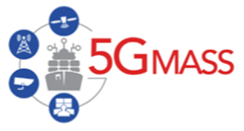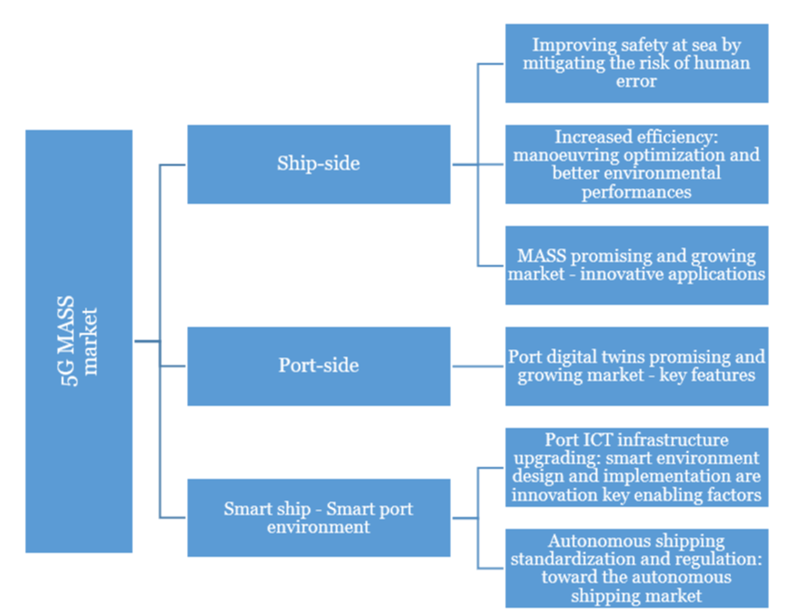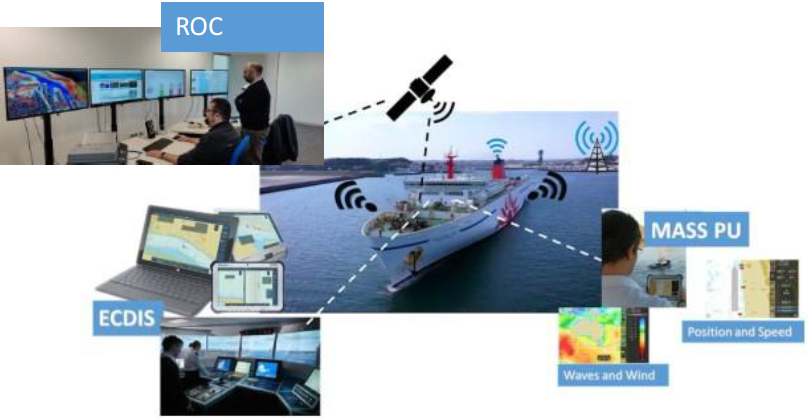
Objectives of the service

The objective of this service is to impact on the digital transformation of ports and maritime industry, to allow an economic growth in these sectors.
Technology is used to improve the performance or reach of organizations, including their management, operations, and assets.
The impact on logistics and port operations consists of increased efficiency because of assisted manoeuvring, improved planning, and synchronized timing, allowing for increased terminal operator efficiency.
The main advantages include a reduction in fuel consumption, and therefore emissions. Even though safety is currently considered a concern, overcoming the challenges effectively would mean that maritime safety could be improved, as most shipping accidents result from human error, often related to fatigue.
The 5G MASS System provides to maritime shipping companies, ports and pilots a 5G and satellite-based tool for assisted and autonomous shipping in the proximity of seaports.
A verification campaign was performed in October 2023 to characterize the performance of the 5G MASS System.
Moreover, a field trial was conducted in November 2024 involving the ship Eco Savona from the Grimaldi Lines fleet.
Finally, in November 2024/December 2024, a measurements campaign was performed to demonstrate the 5G MASS System was able to operate as expected.
Users and their needs
| User tipology | Description |
|---|---|
| Port Authority | The official organization that controls and manages the activities in a port |
| Cargo Shipping Company | A company that is specialized in the moving of cargo containers from one port to another port |
| Port Pilot Corps | Pilots are the Commanders’ advisors during the most delicate phases of the manoeuvres of their ships and constitute the best guarantee that it is carried out with the utmost respect for the safety and security of the people and structures of the ports in which they operate |
| Coast Guard | The Coast Guard is in charge of maritime duties ranging from ensuring safe and lawful commerce to performing rescue missions in severe conditions. |
| Remote Operation Center | A physical / cyber place where MASS operations are monitored and controlled (as from definitions in ISO TR 23860) |
User needs:
-
Real-time information shared between the shipboard and the port digital for Assisted berthing;
-
Navigational safety while reducing the burden on the navigator master, the pilot, and the ship crew;
-
Real time alert in case of critical events;
-
History information for knowledge;
-
Information exchange and storage compliant with international standards;
-
Availability of all information in real-time relying on the complementary capabilities provided by the satellite and terrestrial-5G networks;
-
5G networks will allow measurements at higher speed, larger traffic capacity and ultra-low latency;
-
Traffic Control in the port or near-port waters;
-
Time Saving;
-
CO2 Saving with reduction of pollution;
-
Fewer accidents that are caused by human error.
Service/ system concept
The 5G MASS system consists of interconnected functional blocks described hereby:
-
The Ship Side is composed by an Electronic Chart Display and Information System (ECDIS) already available onboard the ship. Thanks to a Multiplexer installed on the ECDIS board different NMEA signals are sent to the Vessel Aggregator module in the IoT Gateway PC on board the ship. Furthermore, high-definition LIDARs and HD cameras are installed on board sending data to the Vessel Aggregator.
-
The Ship is equipped with the following radio communication systems: FBB (backup) and VSAT (main).
-
The Maritime Autonomous Surface Ship Piloting Unit (MASS PU) is composed by the nomadic equipment and the running software to be carried by the pilots. It is based on COTS with the firmware and software development that have been carried on throughout this project.
-
The Sea Port Remote Operation Center is structured as a private cloud with a full decoupling of the three canonical layers. At the platform layer, the information coming from the port infrastructure (most notably weather, wind, wave height and current) is digitalized and made available to the other modules.
-
The Vessel Companion module renders a digital twin of the autonomous vessel implemented through a set of microservices on a container-based software methodology.
-
The Path/Track Controller (PTC) computes the best path for the vessel based on the information coming from the vessel and port.
-
The AI-assisted Data Aggregator successfully merges heterogeneous information into a consolidated, aligned environment enabling comprehensive situational awareness.
-
The Augmented Reality (AR) component employed on the smart glasses provided to pilots further enhances scenario comprehension and operational efficiency.

Space Added Value
The proposed system exploits the following assets:
-
5G communication networks
-
Localization services
5G networks bring enhanced connectivity to improve cloud-based positioning applications, faster video buffering and value-added services.
The use of 5G brings higher speed, larger traffic capacity and ultra-low-latency (or signal delay) communications if compared to other solutions. 5G features is also adopted for accurate positioning, navigation and timing to align video stream metadata for the same scene as captured from different cameras. These features are of paramount importance for the remotization of the vessel control especially in difficult operations like those of manoeuvring and docking in port waters.
The data from GNSS satellites can be used to improve the estimation of the positions of other ships in the stretch of sea where the operations take place.
In the 5G MASS system, the highly accurate localization of the ship in the port basin was achieved by aggregating three different sources of information, listed below on the basis of their readiness:
-
GNSS information from GNSS receivers;
-
GNSS corrections from the RTK network;
-
Corrections calculated by the Artificial Intelligence.
These elements are part of the so-called 5G MASS localization platform.
Current Status
The 5G MASS project was successfully completed. A Contract Change Notice is now envisaged to upgrade the 5G MASS System developed during this phase extending the scope and the targets of the project to demonstrate that the solution can be exported in new environments that are following other design principles with different performance levels.






